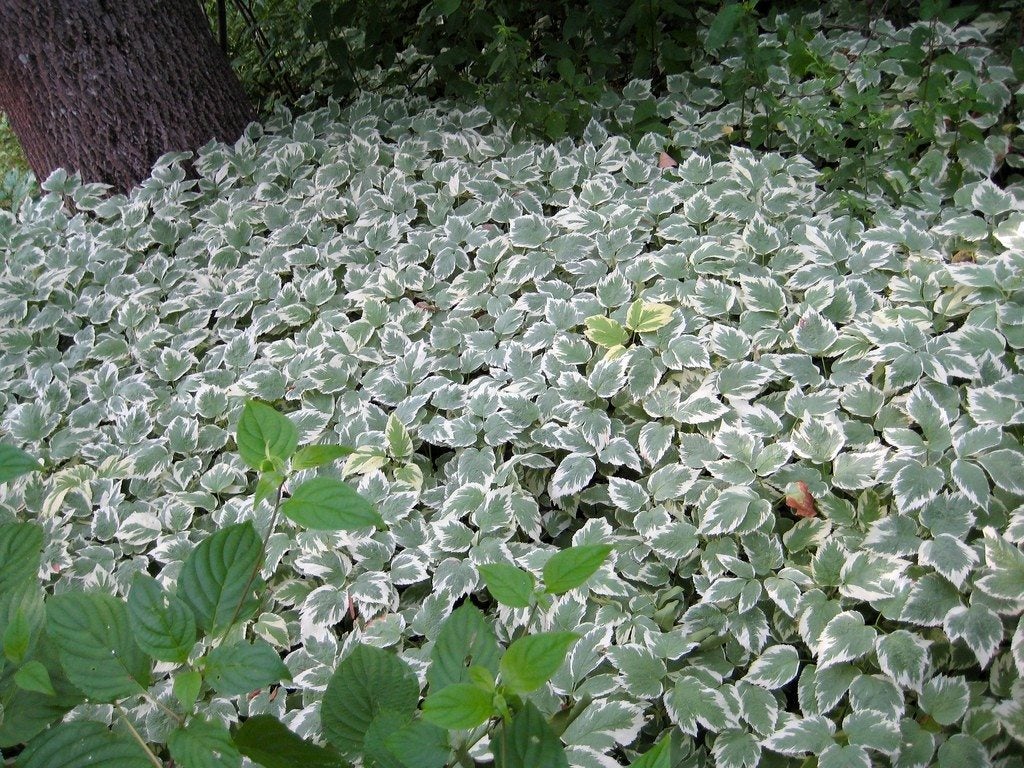Bishop's Weed Plant - Keeping Snow On The Mountain Ground Cover Under Control


If you're looking for a ground cover that thrives in deep shade where grass and other plants refuse to grow, look no further than snow on the mountain plant (Ageopodium podograria). Also called bishop's weed or goutweed, the shallow roots of this quick growing, deciduous ground cover sit above those of most companion plants so that they don't interfere with their growth. Solid green varieties provide a lush, uniform appearance, and variegated forms have white highlights that glisten in deep shade.
Growing Snow on the Mountain Ground Cover
Snow on the mountain plant is hardy in USDA plant hardiness zones 3 through 9. Growing Aegopodium is easy in the right location. It tolerates almost any soil as long as it is well-drained, and needs full or partial shade. Shade is particularly important in areas with hot summers. In locations with mild summer temperatures, snow on the mountain ground cover won't mind some morning sun. One of the most difficult things about growing Aegopodium is preventing it from spreading into areas where it isn't wanted. The plants spread by means of brittle underground rhizomes, and digging up unwanted plants often causes them to spread even more because broken bits of rhizomes quickly form new plants. To compensate for this, install an edging that sinks a few inches (8 cm.) under the soil around the bed to contain the plants. If it spreads beyond the desired area, an herbicide may be the only solution. Snow on the mountain plant only responds to herbicides when there is new growth on the plant, so use it in early spring or mow down the plants and allow new growth to emerge before spraying the plants. When growing variegated forms of snow on the mountain plant, you may occasionally see a solid green plant. Dig these plants out immediately, getting rid of as much of the rhizomes as you can. Solid forms are much more vigorous than the variegated ones and will soon overtake the area.
Care of Snow on the Mountain
Bishop's weed requires very little care. The plants grow best if watered during dry spells. In late spring or early summer, the plants produce small, white flowers. Many growers think the flowers detract from the attractive foliage and pick them off as they appear, but removing the flowers isn't necessary to keep the plants healthy. After the bloom period, run a lawn mower over the plants to rejuvenate them. They'll be ankle high again in no time.
Sign up for the Gardening Know How newsletter today and receive a free copy of our e-book "How to Grow Delicious Tomatoes".

Jackie Carroll has written over 500 articles for Gardening Know How on a wide range of topics.